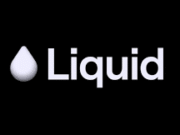In a dramatic turn of events, decentralized derivatives platform Hyperliquid has reported a staggering bad-debt figure—approximately $4.9 million—after a sophisticated manipulation of the memecoin POPCAT. The fallout has thrust into sharp relief the risks inherent in leveraged trading, thin liquidity markets, and the mechanics of community vaults in the DeFi space. Here’s a detailed breakdown of what occurred, how it happened, the implications for the broader industry, and some thoughts on the road ahead.
What Happened
On November 12 and 13, 2025, Hyperliquid experienced a severe stress event linked to POPCAT. According to multiple on-chain analytics firms and crypto media:
- An attacker withdrew $3 million USDC from the centralized exchange OKX, split the funds across 19 wallets, and used them to open long positions on POPCAT with about 5× leverage, accumulating exposure between $20 million and $30 million. (CoinDesk)
- The attacker then placed a large buy-wall at around $0.21 per POPCAT token, artificially inflating price and liquidity participation in the token. (CoinDesk)
- At a critical moment, the buy-wall was removed, price collapsed, the attacker’s long positions were liquidated, and due to thin market depth and other trades being forced, Hyperliquid’s community liquidity vault—known as the Hyperliquid Provider (HLP)—was left holding the bag. The result: roughly $4.9 million in bad debt incurred by HLP. (FXStreet)
- In reaction, Hyperliquid temporarily paused deposits and withdrawals (notably on its Arbitrum bridge) to contain further damage. (Decrypt)
In short, what appears to have been a deliberately orchestrated price-manipulation event triggered cascade liquidations, forcing Hyperliquid’s vault to assume significant losses.
How the Attack Worked
This episode is a textbook example of how a sophisticated actor can exploit leveraged trading systems and low-liquidity tokens to inflict outsized damage. The key mechanics included:
1. Leveraged Long Positions on a Thin Token
By using multiple wallets the attacker spread risk and circumvented simple wallet-size defenses. Opening 19 wallets with similar positions allowed the actor to build a consolidated long exposure nearing $30 million—on a token that likely lacked the depth to support such a position without distortion.
2. Price Support Illusion via Buy-Wall
The large buy orders at ~$0.21 per token functioned as a “support” level, luring additional flows and perhaps reinforcing algorithmic triggers. That buy-wall created a false sense of liquidity and demand.
3. Sudden Liquidity Withdrawal → Price Collapse
Once the illusion had enough participation, the buy-wall was withdrawn, the price collapsed, long positions got liquidated, and the exchange’s risk infrastructure was triggered. Because the token was thinly traded, the knock-on effect forced the HLP into absorbing the residual positions and losses.
4. HLP Vault as Backstop
Hyperliquid’s HLP vault is designed as a safety net for failed liquidations in its perpetuals markets. But in this case the vault absorbed roughly $4.9 million of losses. That sum likely reflects the residual exposure after collateral and leverage were wiped out. (Bitget)
The Figures at a Glance
- $3 million USDC initial capital used by attacker. (CoinDesk)
- ~$20 million–$30 million exposure in long positions. (FXStreet)
- ~$4.9 million bad debt for HLP after the event. (Decrypt)
- Token price of POPCAT dropped ~19% in 24 hours in the aftermath. (The Crypto Times)
Why the Incident Matters
Though it might read like an isolated drama, the Hyperliquid-POPCAT event carries implications far beyond the parties directly involved. Among the reasons this matters:
Liquidity and Leverage Risk in DeFi
Platforms that permit high leverage on low-liquidity tokens are vulnerable. As noted by analysts, DeFi protocols frequently lack traditional market-maker depth, circuit breakers, or robust regulatory oversight. This creates blind spots. (AInvest)
Community Vaults and Shared Risk
The HLP model effectively spreads risk across token-holders or participants. But when a large event hits, those collective protections can be put under extreme stress. If multiple large events happen in short succession, the model may fail unexpectedly.
Reputation, Confidence, and Platform Risk
When a protocol suffers a large loss and has to pause operations (like deposits/withdrawals), user trust erodes. That in turn can lead to flight, lower liquidity, and a vicious cycle. Deposits/withdrawals on Hyperliquid were temporarily halted. (CoinGape)
Regulation & Oversight Pressure
Events like this raise questions about how decentralized exchanges can or should mitigate manipulation. The combination of anonymity, high leverage, and thin‐token markets is increasingly viewed as a structural vulnerability. (AInvest)
The Aftermath for Hyperliquid & Stakeholders
In the wake of this attack, there are a number of specific consequences and considerations for Hyperliquid, its users, and the wider market.
For Hyperliquid
- The HLP vault absorbed a significant loss (~$4.9 m), which reduces the cushion available for future failures.
- Operational disruption: the Arbitrum bridge was paused, highlighting the platform’s contingency mechanisms.
- Potential reputational damage: users may question the risk controls, token listing criteria, and governance of the exchange.
For Token-Holders and Liquidity Providers
- Those who had funds in HLP or used Hyperliquid’s levered markets may face indirect risk from diminished vault capacity.
- Users of POPCAT or other thin-liquidity tokens will likely rethink the risk of leveraged exposure in such assets.
For Market Participants & DeFi Ecosystem
- Other protocols may tighten listing standards, reduce leverage on thin tokens, or introduce new risk-controls (e.g., circuit breakers, dynamic margining).
- Market watchers will take this episode as a cautionary tale of “pump-and-dump” style manipulation in DeFi.
Lessons for Traders and Platforms
Given what transpired, here are some takeaways for market participants and for platforms operating in similar spaces.
For Traders
- Avoid high leverage on low‐liquidity tokens: Even small capital can trigger large effects, especially in leveraged markets.
- Watch for suspicious order‐book behaviour (e.g., huge buy-walls on thin markets) – these can precede manipulative events.
- Be aware of the counterparty/platform risk, not just token price risk: The platform’s structure and risk controls matter.
For Platforms
- Improve listing and risk controls: Thin tokens deserve stricter scrutiny, higher margin requirements, or lower leverage limits.
- Dynamic risk management: Protocols might adopt real-time monitoring of order‐book depth, wallet fragmentation, and flow anomalies.
- Transparent mechanisms for losses: Community vaults should clearly articulate how they absorb losses and how participants are protected or exposed.
- Contingency + communication plan: Pausing bridges or withdrawals must be managed carefully to preserve trust and clarity.
DeFi’s Structural Fragilities
This incident is far from unique. It echoes earlier episodes (for example, the earlier manipulation around the token JELLYJELLY on Hyperliquid) and highlights recurring themes in decentralized finance:
- Thin token markets: The less liquid the asset, the easier it is to move price with relatively small capital.
- Anonymous multi-wallet strategies: Attackers often fragment capital to avoid single-wallet limits or detection.
- High leverage amplifies damage: Leverage turns what might have been a manageable loss into a platform-threatening event.
- Decentralized platforms lack traditional safeguards: Unlike centralized exchanges with market-makers and regulatory oversight, DeFi platforms often rely on algorithmic or decentralized risk pools alone.
- Community risk sharing has limitations: Vaults like HLP may serve as buffer, but they’re not invulnerable.
In other words, the POPCAT incident isn’t just a headline—it’s a wake-up call for anyone operating in or using DeFi levered markets.
What Comes Now for Hyperliquid and the Market
While we will avoid the phrase “what’s next”, it’s still valuable to consider how Hyperliquid and the broader ecosystem might respond and evolve.
Likely Platform Responses
- Review of token-listing criteria and margin/leverage rules for thin tokens.
- Enhanced real-time monitoring of suspicious flows, wallet fragmentation, and large order-book imbalances.
- Caps or circuit breakers on tokens with low liquidity or high volatility.
- Increased transparency around how the HLP vault is sized, funded, and insulated from such events.
- Communication to users: Rebuilding trust will require open disclosure and perhaps compensation mechanisms.
Implications for Traders and Token Projects
- Token projects (especially memecoins or low-cap coins) may face greater scrutiny when listing on levered platforms.
- Traders may shift to more liquid tokens or platforms with stronger risk controls.
- The event may catalyze regulatory interest in DeFi leverage markets, particularly where consumer funds are at risk.
Impact on DeFi Ecosystem
- Platforms may compete on improving risk-controls, not just features or leverage.
- Risk management frameworks may become a selling point for serious DeFi users.
- Protocols might adopt retroactive audits or insurance models to protect community vaults.
Final Thoughts
The Hyperliquid-POPCAT event is a sobering reminder: in the fast-moving world of decentralized finance, innovation comes hand in hand with risk. A single actor, wielding a few million dollars and carefully orchestrating orders, was able to exploit structural features of a platform, inflict millions in losses, and momentarily disrupt operations.
For traders, platforms, and token projects alike, there’s no escaping the lesson: liquidity matters, structure matters, and risk controls matter. If you’re participating in levered trading or DeFi vaults, never assume the system is immune to sophisticated manipulation. And for platforms, community vaults are only as strong as the risk architecture surrounding them.
In this age of memecoins, multi-wallet strategies, and leveraged DeFi markets—lessons like these should be taken to heart.
Sources:
- CoinDesk: “Alleged POPCAT Manipulation Hits Hyperliquid with $4.9 M Loss” (CoinDesk)
- FXStreet: “Hyperliquid Price Forecast: HYPE under pressure as HLP absorbs $5 million bad debt” (FXStreet)
- Decrypt: “Hyperliquid Temporarily Paused Some Withdrawals as Popcat Trader Scrutiny” (Decrypt)
- CoinGape: “Hyperliquid Halts Deposits and Withdrawals Amid POPCAT Liquidation Saga” (CoinGape)
- CryptoTimes: “Hyperliquid Vault Suffers $4.9 M Loss in POPCAT Manipulation Attack” (The Crypto Times)
- ChainCatcher: “An attacker or malicious manipulation of POPCAT led to a loss of 4.9 million dollars …” (ChainCatcher)
- AInvest: “The Rise of Altcoin Market Manipulation: Lessons from the POPCAT Pump-and-Dump Scandal” (AInvest)



























